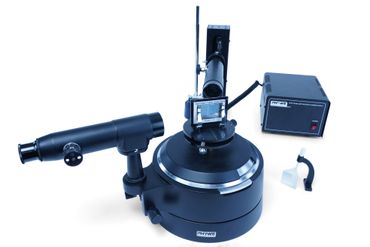
Technical data Fine structure: one and two electron spectraArticle no: P2510605  Benefits
Principle To determine the wavelength, a spectrometer-goniometer is used. It consists of a dispersive element, which deflects light through an angle depending on the wavelength, and a goniometer to determine the angle of deflection of the light beam. As dispersive elements a grating and a flint prism are used. In case of single electron spectra the spin-orbit coupling produces doublet spectra. For measuring the splitting of the sodium 2P -levels the in nm-range, double lines from transitions involving these levels are observed with a dispersion grating. For the two electron spectra the transition from LS- to jj-coupling occurring from lighter to heavier elements is of importance, causing "forbidden" lines to appear with the heavier elements having larger atomic number Z. Here weaker lines may be observed using a dispersion prism allowing for less spectral resolution but better visibility because of less stray light. Tasks One-electron spectra:
Two-electron spectra:
Learning objectives
Scope of delivery
| |||||||||||||||||||||
Robert-Bosch-Breite 10 – 37079 Göttingen – Germany
www.phywe.com

